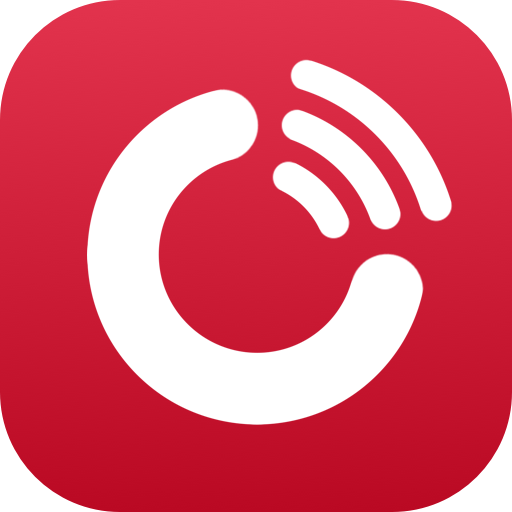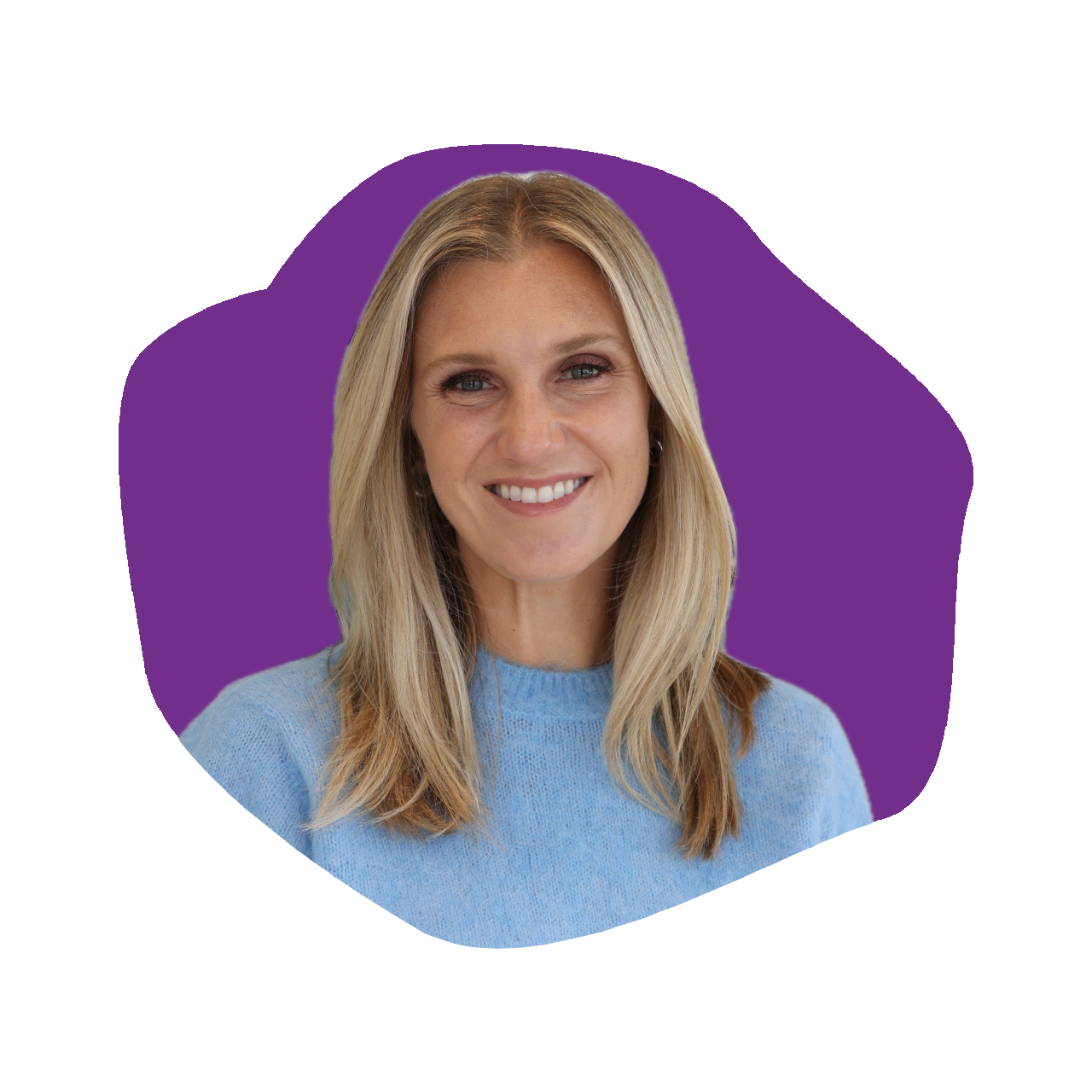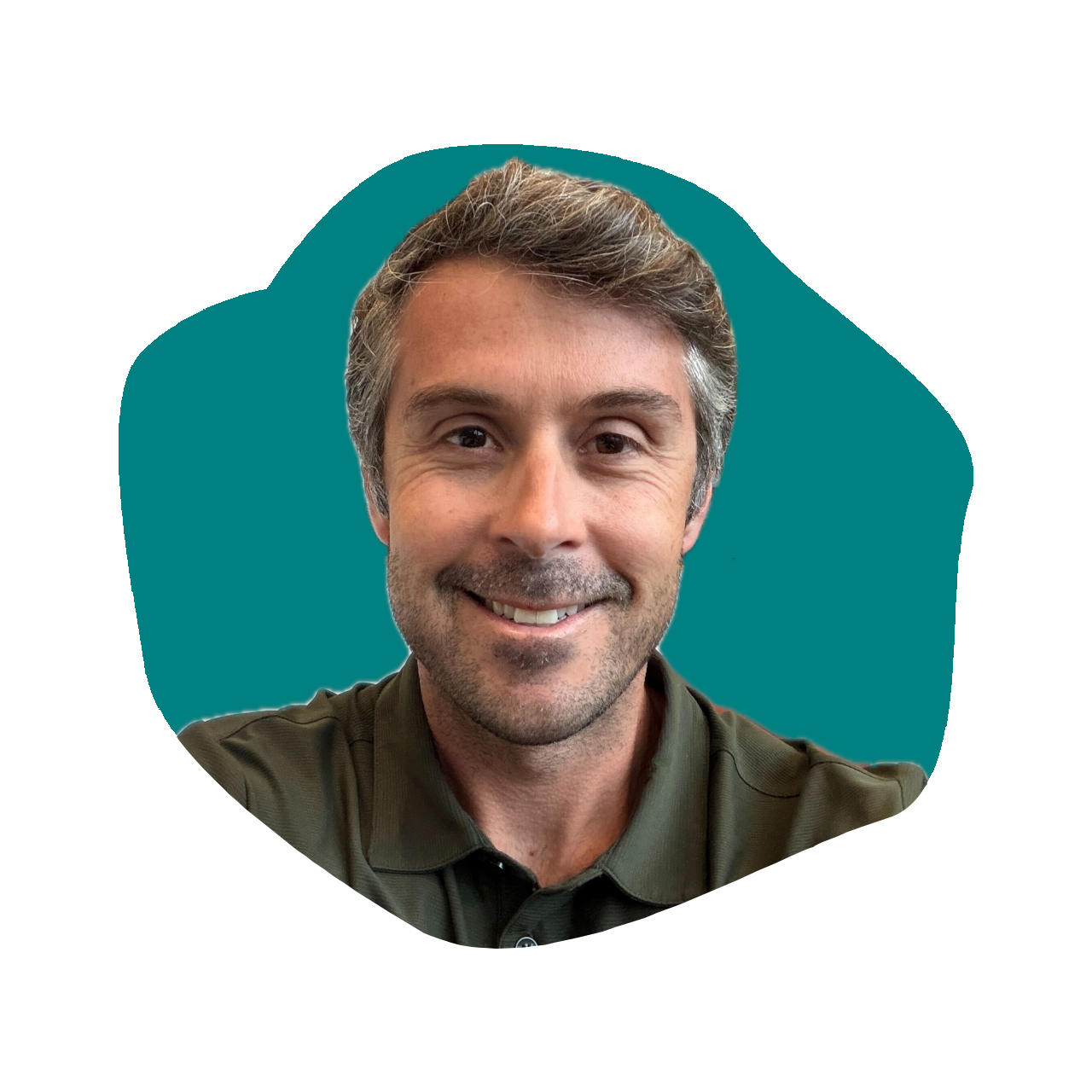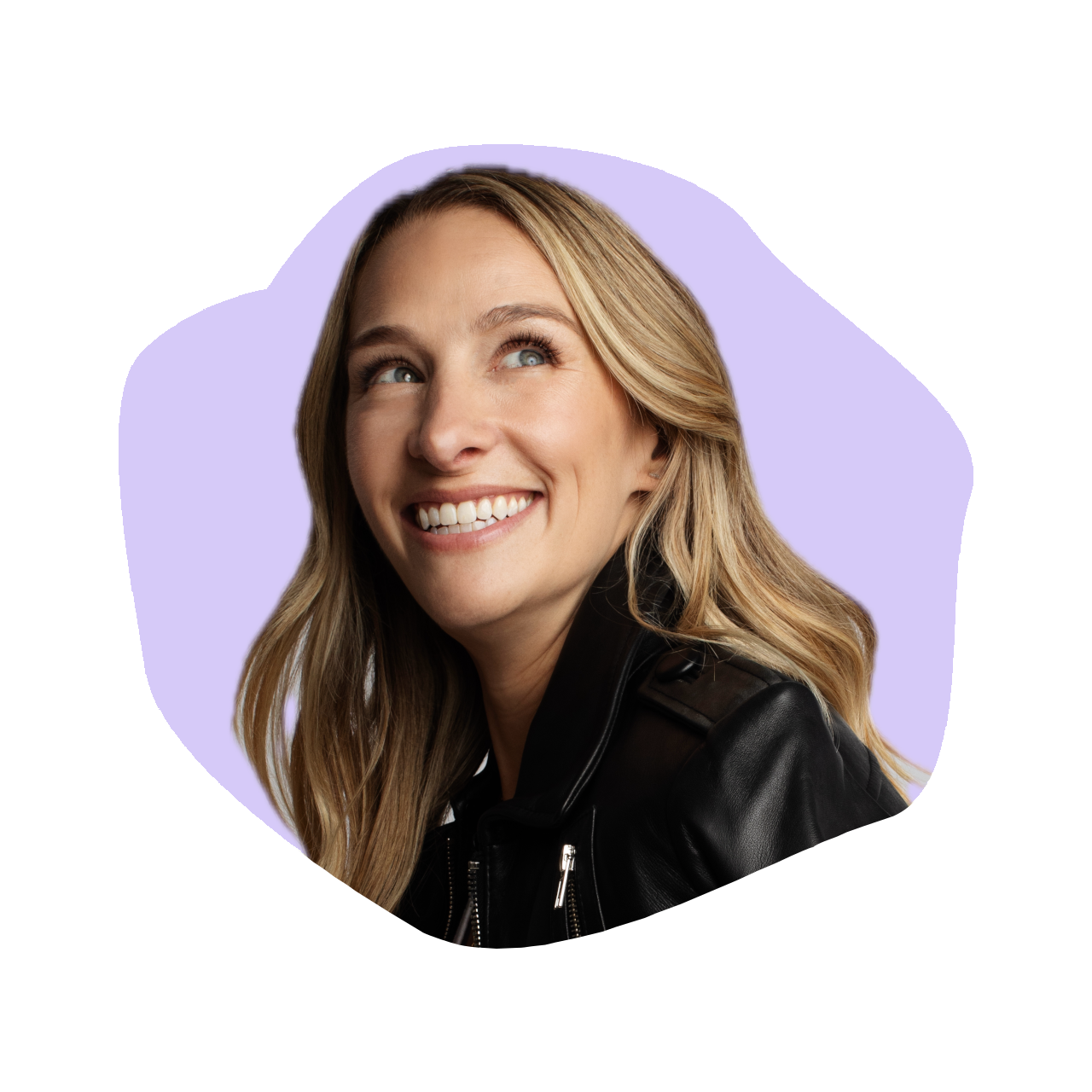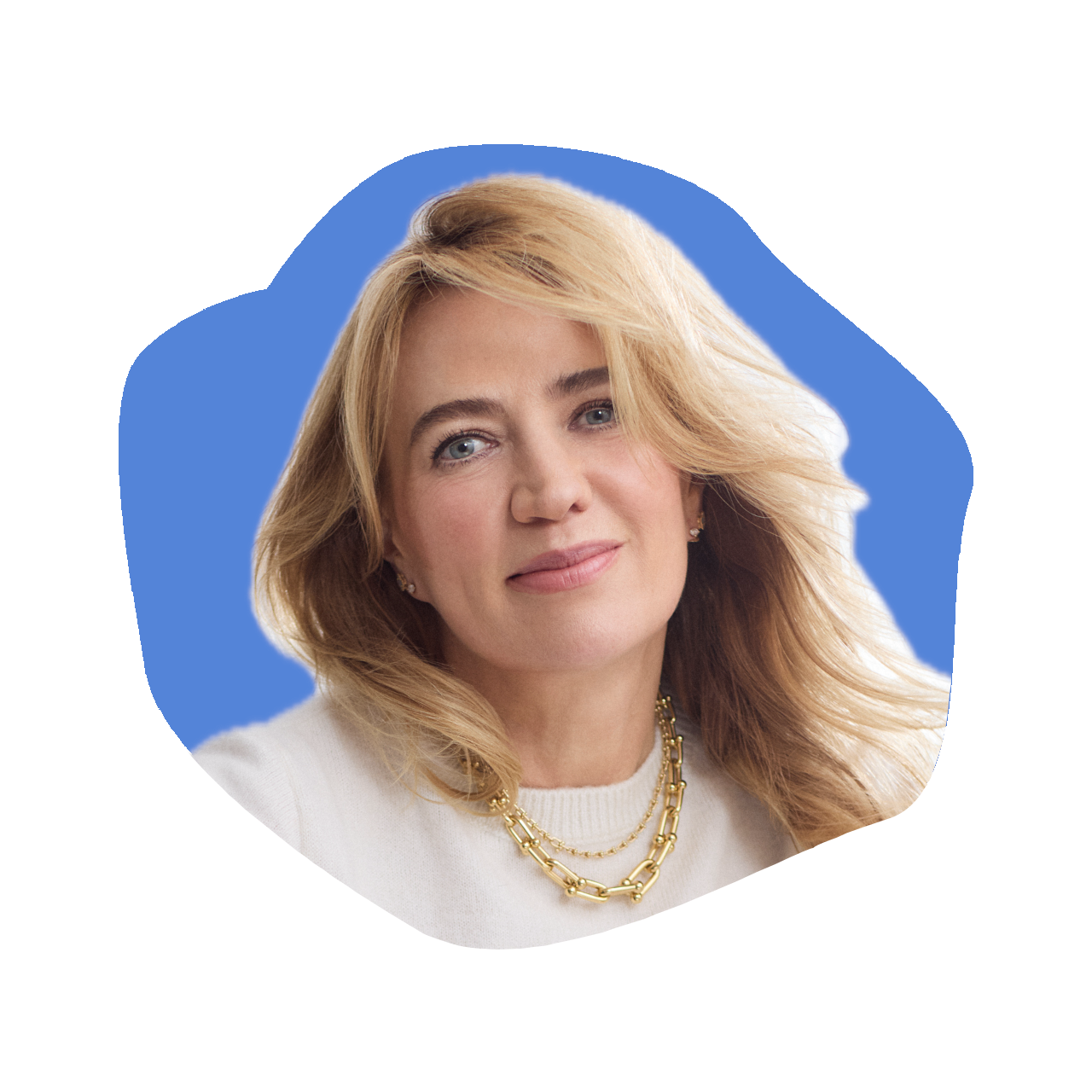Kimberly Lau: Founder & CEO of Project ReWear
Episode 648
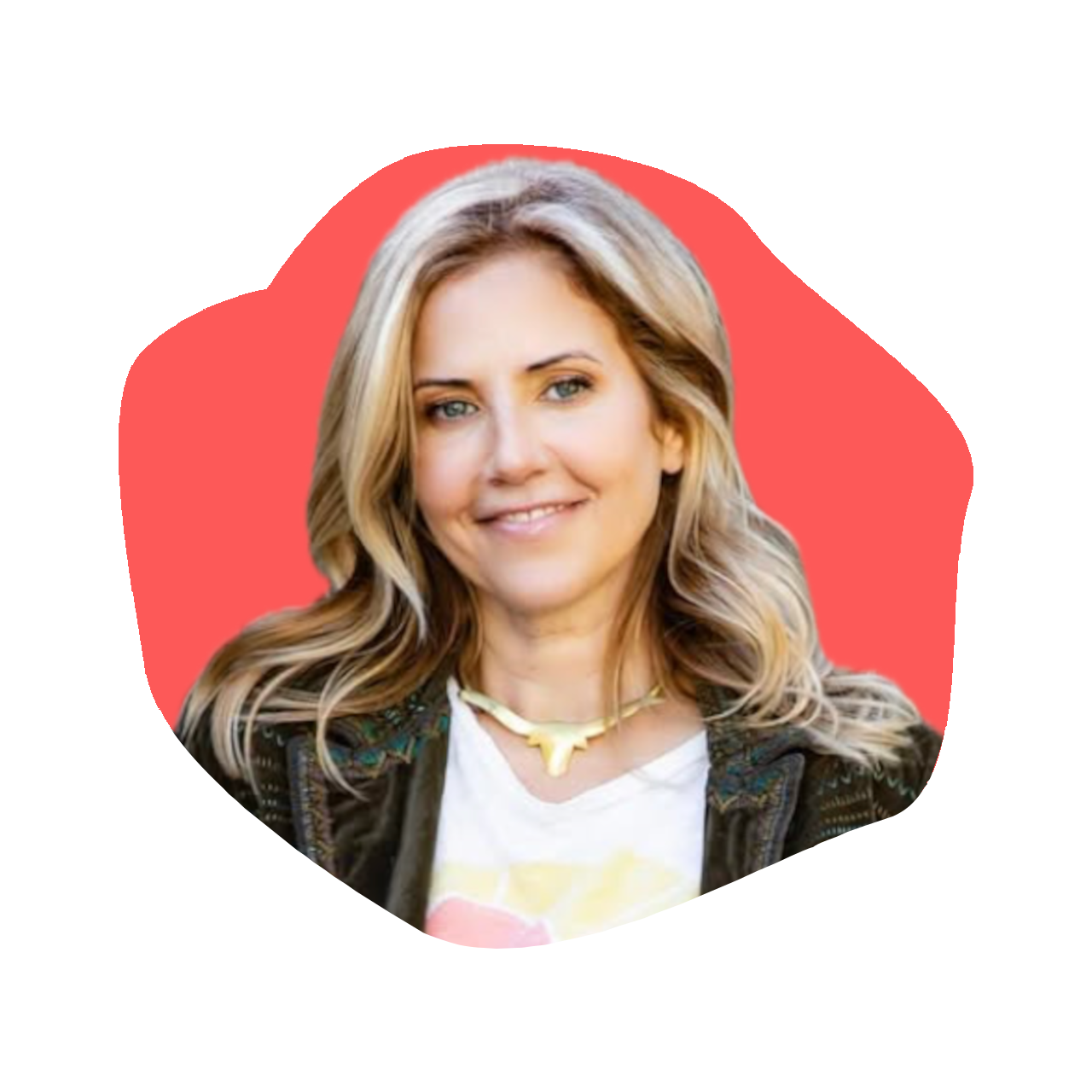
On this episode of The Kara Goldin Show, we’re joined by Kimberly Lau, Founder and CEO of Project ReWear. Kimberly is transforming sustainable fashion by offering stylish, affordable preloved clothing for children, helping families save money and reduce waste. Since its launch, Project ReWear has saved over 3,000 pounds of clothing from landfills.
Kimberly shares her journey building Project ReWear, the challenges she’s faced in sustainable fashion, and the impact of initiatives like the California Responsible Textile Recovery Act. We also discuss how events like the LA fires emphasize the urgency of sustainability. If you’re interested in eco-conscious entrepreneurship or sustainable fashion, this episode is a must-listen. Tune in now on The Kara Goldin Show!
Resources from
this episode:
Enjoying this episode of #TheKaraGoldinShow? Let Kara know by clicking on the links below and sending her a quick shout-out on social!
Follow Kara on LinkedIn – Instagram – X – Facebook – TikTok – YouTube – Threads
Have a question for Kara about one of our episodes? Reach out to Kara directly at [email protected]
To learn more about Kimberly Lau and Project ReWear:
https://www.projectrewear.com/
https://www.instagram.com/projectrewearkids/
https://www.linkedin.com/in/kimberly-l-a23a57268/
Transcript
Kara Goldin 0:00
I am unwilling to give up that I will start over from scratch as many times as it takes to get where I want to be. I want to be you. Just want to make sure you will get knocked down. But just make sure you don’t get knocked out, knocked out. So your only choice should be go focus on what you can control. Control. Hi everyone, and welcome to the Kara Goldin show. Join me each week for inspiring conversations with some of the world’s greatest leaders. We’ll talk with founders, entrepreneurs, CEOs and really, some of the most interesting people of our time. Can’t wait to get started. Let’s go. Let’s go. Hi everyone, and welcome back to the Kara Goldin Show. Today, I’m so excited to welcome Kimberly Lau, who is the founder and CEO of Project ReWear. Kimberly is on a mission to revolutionize the way families approach sustainable fashion, particularly when it comes to children’s clothing. And with Project ReWear, she’s not just reducing fashion waste. She’s creating affordable, stylish solutions for parents, while promoting eco conscious living. She, of course, is, I say, of course, because wouldn’t you know it is down in kind of the epicenter right now of everything going on with the fires and definitely Project ReWear has done quite a bit during the last few weeks, so I’m very, very thankful, grateful for everything that they’re doing, but also am excited To hear a lot more about what she’s been doing and how it’s all going since its launch, Project ReWear has saved over 3000 pounds of clothing from landfills and empower families to embrace slow fashion. So I, like I said, am very excited to talk to Kimberly. So welcome. Very excited. So if you had to describe Project ReWear at its core, how would you describe it? I
Kimberly Lau 2:07
would say it’s, it’s really just goes back to what my why is. It’s the same as my personal why to teach empathy, compassion, kindness and helping others, help the planet. I just It’s just about making a difference in doing it through an innovative way. I
Kara Goldin 2:22
love it. So how do you hope it inspires change in the fashion industry? So it’s one thing to have a personal goal, but what kind of change do you really want to see in the fashion industry? And how do you think Project ReWear can really help?
Kimberly Lau 2:38
Yeah, well, I mean, if you go back and this is it’s almost better as like a story a year ago, when I was trying to figure out ways to make a difference, because I left the wealth management industry after 24 years, and I knew I wanted to do something to make a difference in around kids. So when I heard this one quote where they said it, the clothes in your suitcase are more damaging to the environment than the plane they fly on. I knew I had to do something, and it just wound up. And I can get into that an interesting story later, about fashion and kids and sustainability. And so from that point on, I looked at all routes of what I needed to do to take the next steps. And it’s just about working on educating educating a lot of people that just aren’t aware of it. I live in a community where maybe second hand clothing isn’t as popular than other communities, and so I’m just trying to empower them, show them the quality that’s out there, and also educate them on the environmental effects that it’s having on the environment.
Kara Goldin 3:44
So how did you get this idea in terms of focusing on children?
Kimberly Lau 3:49
Yeah, so I am a mom of two teenage boys now, and I know how fast they grow, and we know every size and season. And then obviously, if you have other siblings, different boy, girl, you need new clothes every season, you know. And unfortunately, we used to have four seasons a year, but now, through fast fashion and all that, we have 365, seasons a year. It’s just constant, new clothes thrown at you. You know, their kids are marketed on social media. And so with my kids, and knowing every two or three months we’d clean out their closet and half of what they had had tags on them. And I was like, This is ridiculous. So then I was I was thinking, okay, you know what, I’m gonna go to the local thrift stores, because in the area I live, we actually have quite a few in the surrounding areas. And then I just sat there. I went inside, I brought a chair and I watched people. I literally had notebook and I watched people. I wanted to see the types of people that came in. I wanted to see the types of items they were buying. I just wanted to learn everything. And when I sat there, I just, I just kind of knew, I’m like, This is it? There’s something. Here, there’s so much of it, half of it even has tags on it. I’m like, What is going on? So that was kind of my starting point. If that answers your question,
Kara Goldin 5:12
yeah, definitely. So the consumer goes to your site, project, reware, and what are they gonna see? And I guess, what is the business model?
Kimberly Lau 5:24
Yeah, so it really, this is, I kind of did things backwards. It’s sort of a design thinking. I’m embracing the unknown, the uncertainty, and I’m just going for it. I’ve definitely taken some chances. I guess I would call myself a social entrepreneur. I’m a cause driven business, but it’s not a it’s not a charity run at the moment, it I’m the one that’s the charity at the moment, buying all the items. So I go across to all different thrift stores. I personally now bought over 30,000 items, hand picked them, and that’s all about the quality, durability and brands. And then I personally style many of them, because it has to start on a smaller scale. We do have a website, and I we do, we did product shoots, and we have posted plenty of outfits on there. However, the storefront, which just opened a month ago, is more of the showroom. It’s like a showcase. So while it’s great that it’s a store and it helps the community, I look at it as a showcase. Of it’s sort of a visual. It’s a very visually appealing because every item, 95% of the items in there, are from thrift stores, even from the merchandising side, and it’s all for sale and so and then we add elements of statistics and fast fashion, and then we just really, kind of personally curate and style the outfits to make it look very visually stimulating. And then the hope is that people will come in and find it entertaining, find it informative, and walk out and tell their friends. And then adding that a component of it’s called the landfill project, where we weigh every item that is purchased in the store, and then we have these little cards, and it’s called Snap and share. If the person is willing to share on their social media the amount of weight they saved, all they have to do is take a pick. They get a discount, that immediate purchase, that’s awesome. And then we have these community goals, and once we meet the community weight goals, then we’ll have more incentives.
Kara Goldin 7:29
So your first store, which I don’t think is going to be your last store, it sounds like you’re getting out there quite a bit. Where is that located? It’s in
Kimberly Lau 7:41
1000 Oaks, California, Westlake Village. 1000 Oaks, probably about 20 minutes east of Malibu.
Kara Goldin 7:47
That’s, yeah, that’s incredible. So through the fires, it wasn’t just the Palisades fire. There were multiple other ones going on. Can you talk a little bit about, you know, how the community came together, what did project, re, wear, do during this time and and overall, paint a picture for us?
Kimberly Lau 8:10
Well, it’s interesting, when you live in a community that’s obviously very vulnerable to these types of, you know, fires and disasters, you you started realizing, like, why you live here? Because everybody just wants to step in and help. They really do. And we’re we were actually here. The Woolsey fire was very close to us, like, right here, Malibu and Palisades is still close, but we’re not right on top of it. But the sense of community has been amazing. And I, my boys and I, years ago, started something called lemonade for disaster relief. So when there were all the hurricanes or other fires, or there that was that borderline shooting or like the scuba dive Channel Islands accident, we made, we designed shirts, and then we all profits went to charity, and the community stepped in. We did lemonade stands. So now when you talk about these fires, everybody wants to help. We get people walking in the store now saying, can we donate, give to you? Well, unfortunately, they’re actually saying there’s way too many clothes. People are just kind of cleaning out their closets. But there’s many other ways to help. And so it doesn’t mean you actually have to give clothes to the people right now if there’s way too much, but there’s other ways you can do it. So we’re actually, we designed a shirt that we’re going to be launching soon, and we’re going to get, we have a few celebrities that are going to be sort of ambassadors, hopefully, to attach to the shirt. It’s just an LA strong. It’s very simple, but it’s really cool. And I’m excited because 100% of the profits are going to be going to aid the Humane Society and fire victims directly. And then we recently just had a thing in our store where we donated a percentage of profits.
Kara Goldin 9:49
I love it. So can you share a success story, maybe a memorable moment from the journey where you really felt like you were. For making some big impact and big progress.
Kimberly Lau 10:03
Yeah, I have two. So I recently spoke to a middle school a friend of mine. She’s a teacher there. She says, You know what I teach sixth and eighth graders? I really think they should learn about what fast fashion is doing to the environment. So we, you know, I didn’t name names of any companies or anything, and we just, I went in. I’ve never done this before in my life. And I have, I have a right now, I have a 13 year old and a 14 year old. One’s in seventh grade, one’s in ninth grade. And I said, Hey guys, guess what? I’m gonna be speaking at a middle school. And you know what? The first thing they said was, not our middle school, right? They did not want me to speak there. And then they said, Mom, no one’s gonna listen to you. I’m like, What are you talking about? Like, no one’s gonna listen to you, is it maybe if you bring some candy. So when I showed up to the school and I it was six classes, six and eighth graders, I brought Jolly Ranchers. But the first thing I said was, okay, I need you guys to prove me wrong. I said I have two, I have two middle schoolers or one high schooler, and they said, No one’s going to listen to me. No one’s going to walk out with any information that’s valuable to them. And I said, I just want you guys to walk out with one piece of information. And guess what they did? And it really touched my heart. One of them even wants to be a project re where ambassador, that’s something we have where we have now teenagers, and they’re part of fashion shoots, but we’re also going to start doing like cleanups on the beach and things like that, to help the environment. But they came up and they they remembered two big things. One was, how many gallons of water does it take to make one cotton t shirt? They were shocked. It’s about 712 gallons. That’s like, equivalent to a little less than three years of drinking water for one person. Wow. Or I even have in my store, I brought a gallon of water and a pair of jeans to the visual to the class, and I said, I said, How many does it take to make a pair of adult genes? And it was, I mean, there’s always differing things, but it’s anywhere from, say, 1500 to 2000 it’s roughly 1800 gallons. They all thought it was like 10. And they were shocked. So at the end of each class, we just said, What is the one thing you remember? And those were the two that they really, really stuck with
Kara Goldin 12:25
them. What have been some of the biggest challenges you faced in building the company? I mean, you had actually come from a totally different career, and even though you’re super smart and passionate there. There had to have been times when you just were like, What am I doing? Why am I doing this? You know, it’s, it’s, it’s hard. It’s hard running a business and starting a business from scratch too.
Kimberly Lau 12:54
Yeah. I mean, it’s interesting, because I was in wealth management for 24 years, and honestly, I probably didn’t even have a ton of confidence until maybe my 20th year. I worked in a very male dominated field where you really had to prove yourself, and it was very challenging. However, once I got to the point of just believing in myself, just something flipped in me, and I just, I’m like, I know I can do something. And so I made a plan of knowing how long I really wanted to stay in wealth management. It was a big risk. I literally left a secure income that I knew that I even though we got acquired, I could have stayed. I just I needed to take this chance. I always knew it was a passion. And I my grandma. She was very close to me, and she passed away last November. She was always about giving, always about she volunteered her time in the Cancer Society shops, where there was fashion. She always styled people. She was in interior design, and there was just something that gave me like it was the challenge, but it was also like the unknown, and as soon as she died, like two months later, this idea came into my head, and it’s like, I feel like I have her and me. That’s like, you can do this, Kim, and it’s okay, take the chance. I it’s like, I feel like, and this is interesting to say I would rather lose everything, and know I tried this, and even being a single mom of two boys, then sit here and take a job that I just know won’t fulfill me and won’t teach my boys what I’ve always wanted
Kara Goldin 14:39
to Teach. No, I love it. And you’re doing stuff, you’re doing a company, and you’re every day waking up with purpose, right? And and really, it takes a lot of resilience, it takes a lot of creativity, but it’s you have to in order to you. Breakthrough walls. You have to have to enjoy what you’re doing and really feel like you’re making a difference. I believe otherwise, burnout and everything else stays with you, not that you don’t have those hard days where they’re a little bit frustrating, but you have to have that feeling inside of you that you’re doing what you’re meant to be doing?
Kimberly Lau 15:21
Yeah, I think I was reading on your social media. I think there was one of the quotes that said something about, don’t wait for the elevator, create the stairs. It was and it’s just taking that one step each day, right, and creating it. And it’s it’s true. And you have many setbacks, many and there’s days you just want to walk away, but I have passion for fashion.
Kara Goldin 15:46
Yeah, I love it. So community. You talked about that a little bit, but I believe that one of the most important things to do as a small business owner is really get the community to understand what you’re doing, you’re going to schools, you’re you’re getting out there. I’m sure you run into people who are like, oh gosh, I love Project reware. It’s so great. But oftentimes there’s the struggle for entrepreneurs, because they feel like, I’ve got to actually go to the store, I I’ve got to hire people, I’ve got to do all these things, and it’s hard to get out there and and really embrace the community, right? And and do the things that you’re supposed there’s not enough hours in the day, I guess is what I’m trying to say, yeah. So how do you view the community involvement and kind of the importance of that as you grow your business. I
Kimberly Lau 16:41
mean, to me, that’s where it starts. Right now, like, that’s, that’s the key. I’m not worried about scaling getting bigger. It’s all about, you know, people first profit second. And right now it is, it really is, the community. And when I was looking and looking, looking at all options of, was I just gonna rent a big warehouse? I have 30,000 items that my kids are about to in my house. We’re about to do an intervention on I’m like, do I just get a warehouse? Do I get a storefront? Do we have it so the community gets involved? And when I really evaluate it, I’m like, No, it’s really all about the community. And I I’m so thankful, because we’ve only legitimately been open for about 27 real days by the time it took to get everything going, and we’ve already had two, like, many, many repeat customers, people talking about it. And I believe, just through the power of in numbers and collective goodwill and knowing that this isn’t about just making, you know, making money, because it’s not, the prices are very low. Even resellers can come and make money. It’s just about the cause. And the community is really like, yeah, stepping in, and I’ve got, even the team members I have, it’s like, there’s two quotes I always like, the greatest gift in life is to know what you don’t know. And I know I don’t know a lot, and I’ve just found these amazing people that it’s just weird. It just they just it just all kind of transpired, even my business partner, I mean, I’ve volunteered once a week at a local thrift store before actually started this when I was still going to other thrift stores and doing the research. And I met her there. She just has volunteered her time as the president of this thrift store, and she ended up, now she’s my business partner.
Kara Goldin 18:25
That’s That’s amazing. So how do you source the pre love clothing that becomes part of Project ReWear? I it. It sounds like you have plenty to source, but how do you decide on, you know what sort of fits into because you’re building a brand. I mean, project reware needs to be known for something, right? And the look and feel. How do you think about that?
Kimberly Lau 18:55
Yeah, no, that’s a good question. I will say, having two boys, I didn’t know a ton about different brands prior to starting this. I knew the basics, but so I just did a ton of research. My boys are like, Mom, you can learn anything on YouTube. So I started watching tons of YouTube videos. Started like I said, going to all the thrift stores. I would start feeling the fabrics, looking at all the brands online. I wanted to try to avoid the brands that are so easy and so much out there already for people going to get the key was showing quality, durability and style, and so that’s where when I go, it was just all about promoting high quality brands that could last longer, they could be repurposed. They could be recite, reused, you know, extending the life of a garment by I think just nine months can can change so many things definitely.
Kara Goldin 19:49
Do you feel like your audience is more, I mean, the Gen Z individuals, or is it the parents?
Kimberly Lau 19:59
Well. Interesting, because a lot of the kids nowadays, I don’t, I don’t have to change the narrative around secondhand clothing with them. It’s there. They love it. It’s like this trend, which is great. I’m trying to convince the parents and the the ones that are actually the role models that can actually make the changes. Because I don’t blame the honestly, I don’t blame brands for doing something that people are consuming. They’re making money, they’re doing what they’re they’re taught and told it’s not them, it’s it’s who’s consuming it. We need to, we need to educate those who are actually consuming it, because that’s where the change can happen. And so with parents and with millennials, it’s really trying to just show, you, know, all the moms and dads and families and grandmas and everybody out here, look, look at what you can find. You don’t have to go to Neiman Marcus. You have the same brand right here. And, you know, in your local thrift store,
Kara Goldin 20:56
yeah, definitely. I mean, it’s, it’s, I’ve got a a few Gen Z kids as well, and and you definitely do not need to convince them. But I think parents, parents get, you know, thinking, Oh, I don’t know if they would like this or not, but I would imagine that a big that they could almost pull the parents in there to your store, and then more and more they start to see that that’s a possibility. Would you ever do adults as well?
Kimberly Lau 21:28
Well, it’s funny you say that. So I always try to look at Think outside the box and think forward, and I’m like, Okay, well, it’s great to have kids clothes, but I want to draw Who am I trying to draw in? I’m trying to draw in the parents and the grandparents. So now we actually do, and I carry, we carry men. And I don’t have a ton of room in the store for women yet, but it will be, I mean, not women, I carry women, but not men. Sorry, but it’s now, it’s drawing them in. And now I’m looking at, when I look at what, what’s been sold. Now I’m trying to evaluate, okay, so there’s this much women, this much kids, it’s actually about equal so you’re drawing the moms in, and then the mom’s like, Oh my God, look at how cute this is. And so it’s it’s working.
Kara Goldin 22:12
So what’s your vision for Project ReWear over the next five years?
Kimberly Lau 22:17
I envision a world of where I can of where second hand shopping, let’s just say, at least in the community, is much more accepted by by target markets that maybe typically wouldn’t have gone there. I don’t, I like to think big, but I have to think big in small steps, right? So I can’t, I’m not. I’m one person. I’m not going to change. I’m one piece of a huge puzzle, right? And so that huge puzzle, if I could just be that one piece. And right now, start at the community. Worry about scaling if I need to later on. I believe in it so much that I know it will happen. I just, I know. And when I say it will happen, it doesn’t mean it will happen and I’ll be this, become rich. I don’t, it’s not even about that. It’s just making the difference and spreading the work.
Kara Goldin 23:04
When you think back on, you know, the early days, which was just an idea that you had, and obviously you had educated yourself about how just being able to create something like this, the impact that you would have. I can imagine that today, and probably not every day, but some days you’re like, Wow. I can’t believe we pulled this off. Right in our case, when I started hint inside of our kitchen, just putting lemon into a bottle, and then it became a brand that is nationwide and in lots of stores and online, and consumers love it. I mean, it’s but going from the very beginning to where you are now, whether you’ve been in business for a year or 20 years, it’s a it’s a big deal. Do you ever take time to look back on that and say, Oh my gosh. Like, how did we even get a 30,000 square foot warehouse? How did we, you know, get people talking about the brand and loving it? I’d love to hear your perspective on that.
Kimberly Lau 24:13
Yeah, no, it’s, it’s, it’s, that’s actually a great question, because I don’t ever really want to be a hypocrite, and I always remember my dad used at a successful company, but he never stepped back to take a breather and look at everything that he accomplished. Right? He never did. And it’s so important. I mean, it’s so important. And so I really do try to take a step, and even when I get frustrated, I’m like, this started less than a year ago, just an idea, and it’s really been me, and then, thankfully, my business partner and everybody but the fact that I, you know, we did focus groups, we now have a store. We’ve been on news. I went and took a class at Penn on social impact this year. I mean, everything we’ve done I’m proud of, and it’s. The first time to really say, besides my boys that like, Yeah, I mean, I won’t say I did it, I’ll say we did it. And it’s not even like we’ve done something huge yet. It’s just I feel like, I just feel grateful. That’s
Kara Goldin 25:16
awesome. So you, prior to starting Project reware, you had a background in wealth management, actually running a business, and you know that you have to pay attention to the financials, even though you’ve got a great idea. Obviously you had that background. What would you say to other entrepreneurs when you think about starting a business that are really, really critical pieces that they need to make sure to not ever lose track of.
Kimberly Lau 25:48
Yeah. I mean, obviously, even if you say you’re people first profit second, you have to be financially sustainable, right? I get that so you have to know sort of the framework of how to run a business and where, that’s where I feel very fortunate is I did start at the bottom, put myself in every single position, all the way till we got to the I was more of the CO CEO, Chief Operating Officer. So I really felt like it was important to understand every position. And so I would say the big deal is embrace the unknowns, but keep your eyes wide open. You know, I think that’s always a good way. It’s just like you gotta take those steps forward. But, you know, you don’t want to, obviously, overlook things so, and I would, I’m also a believer in, um, I actually think sometimes it’s good to be Jack of all trades, master of none. At least that taught me for all these years. If I just mastered one thing, I wouldn’t have learned everything else and to me, and when you stop growing, you stop living, you know, yeah,
Kara Goldin 26:52
definitely. Well, Kim, thank you so much for joining us today and sharing your incredible journey with Project ReWear your work is just so inspiring. I can’t wait to see where it goes from here, and making sustainable fashion more accessible is just incredibly empowering for families and creating a better future for the next generation everything. So thank you so much for joining us and sharing your story. And for everyone listening, be sure to check out Project ReWear and learn more about how they’re transforming the way we think about children’s clothing and sustainability and a little bit adult, even more adults soon. So I think you’re doing some really, really good things. Kim, so thank you again, and we’ll have all the info in the show notes as well. But really appreciate you coming on and talking to us about your journey.
Kimberly Lau 27:48
Oh well, I really appreciate it. Thank you for giving me the opportunity, and I just say like, stay true and follow your daydreams. I love
Kara Goldin 27:56
it. Thanks again for listening to the Kara Goldin show. If you would please give us a review and feel free to share this podcast with others who would benefit. And of course, feel free to subscribe so you don’t miss a single episode of our podcast, just a reminder that I can be found on all platforms. At Kara Goldin, I would love to hear from you too. So feel free to DM me, and if you want to hear more about my journey, I hope you will have a listen or pick up a copy of my Wall Street Journal, best selling book, undaunted, where I share more about my journey, including founding and building. Hint, we are here every Monday, Wednesday and Friday. Thanks for listening, and goodbye for now, bye.




